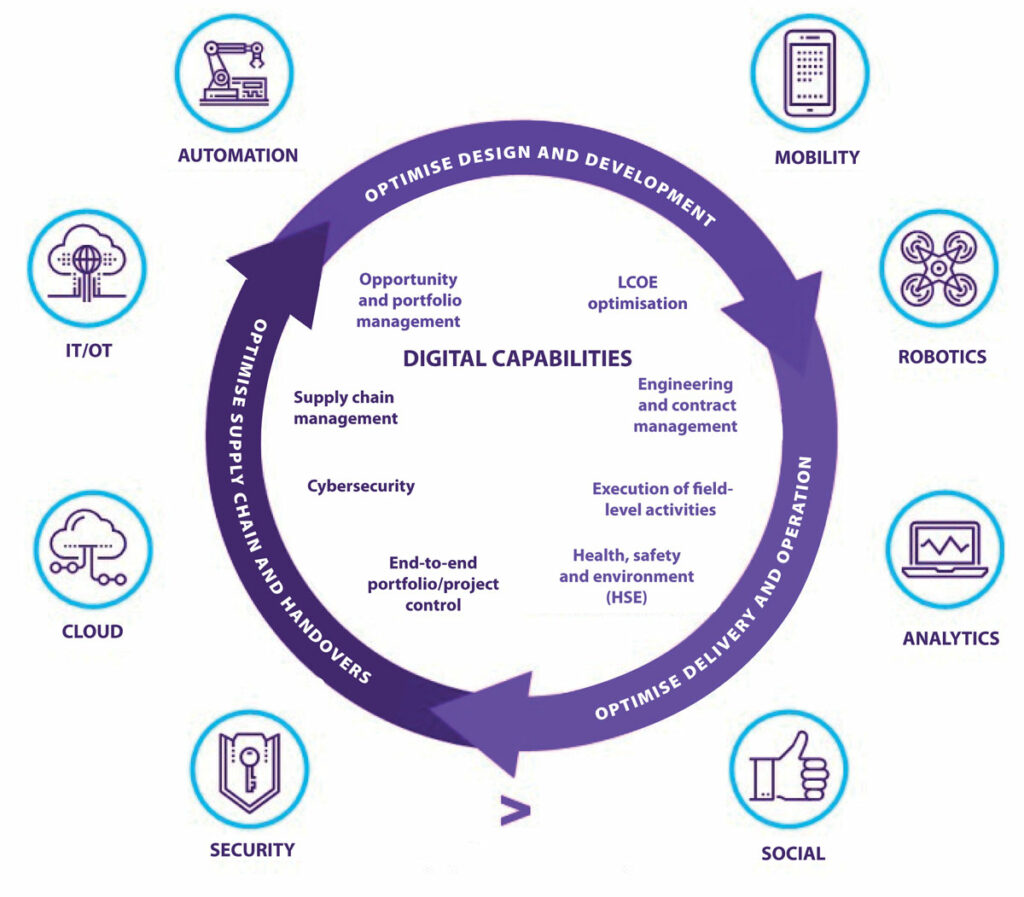Unlocking Ireland’s offshore wind opportunity

Unlocking the potentially abundant opportunity of offshore wind has never been more important or urgent for the island of Ireland, writes Accenture’s Utilities Lead in the UK and Ireland, Aoife Aherne.
With vast reserves of wind energy waiting to be harnessed, the time has come for the island of Ireland to seize this opportunity and deliver upon the promise of a sustainable energy future. Both jurisdictions have set an ambitious target of sourcing 80 per cent of its electricity from renewable sources by 20301,2, with Ireland and Northern Ireland targeting at least 5GW, (+2GW dedicated to green hydrogen production)3 and 1GW4 respectively, from localised offshore wind. This ambition is critical, with renewable generation becoming the core of Ireland’s electricity supply and delivering upon the ambition of a green economy.
With just over half a decade left to 2030, policy makers and industry must rapidly move into an accelerated delivery phase ensuring that the build out happens on-time, at a fair cost and at a competitive price for consumers.
The Marine Area Consents granted5 on 23 December 2022, marked a significant milestone in the delivery of offshore renewable energy projects in Ireland and crucially sent a signal to investors in all sectors of our economy that Ireland remains committed to the targets set out in the Climate Action Plan. This is the first in a series of fundamental delivery milestones which together will enable our offshore wind ambition.
A lot done, more to do
While the marine area consent hurdle has been cleared for the first phase of offshore wind projects, innovation and collaboration across all industry stakeholders is needed to ensure offshore wind energy is maximised in the provision of a secure and reliable electricity supply. With heightened expectations and more ambitious targets set by both governments; industry, policy makers and the broader eco-system must come together to consider how best to:
1. Speed up time to operations: Accelerate licensing, consents and permitting, including the planning stage, through a collaborative approach to policy and regulation design with all stakeholders.
2. Optimise supply chain: Against a backdrop of highly constrained global supply chains, operate competitively and proactively to secure sufficient supply chain capacity required for build and maintain. This includes ensuring timely supply of materials, of components, port facilities, and logistics (vessel) windows.
3. Achieve grid and system readiness: Building on the success of operating an electricity system with high renewable integration and further enabled through increased interconnection with the UK and Europe, the race is on to ensure that the next evolution of pioneering grid innovation keeps pace with the energisation of additional renewable generation capacity.
4. Optimise asset performance: To deliver the dual benefit of unlocking developers, and importantly, consumers return on investment optimisation of asset performance is key. Innovative approaches to asset maintenance, that minimise operational outages, maximise outputs and extend the life of the asset infrastructure are needed to unlock value.
It is time to adopt platforms, data and
digital technology
Innovation in digital technology has transformed entire industries and the offshore wind sector has an opportunity to take a platform centric, data driven approach to enabling capability, without being encumbered by legacy technology estates.
Collaboration is key to accelerating the planning, delivery, and commissioning phases of offshore wind infrastructure projects. Cloud-based platforms facilitate collaboration among project stakeholders and importantly allows for the secure transfer and management of project artefacts and asset information throughout infrastructure delivery. Platforms also provide a ‘front door’ through which additional solutions, products and services can be accessed seamlessly, eliminating redundant manual interfaces and paper-based processes. A multi-billion HVDC Project in Germany has embraced this approach, implementing a Project Control Tower to great effect. Their solution combines the power of platform technology with 3D asset modelling and digital twin solutions, to streamline and coordinate delivery among the many parties involved.

More advanced capabilities, like artificial intelligence (AI) and machine learning are now ‘mainstream’, with scalable cloud-based platforms capable of processing and analysing vast volumes of data faster than a human. Leaders in the aviation sector have harnessed their data to visualise and optimise their supply chain, mitigating potential delays to project timelines. The water and pharmaceutical sectors have embraced data science and AI to create a cohesive view of their operations. They now benefit from real-time situational awareness and an ability to predict and prevent operational issues before they happen, minimising impacts to product quality. With the technology now proven, there is an opportunity for the off-shore wind sector to design for digitally enabled operations from day one – allowing operators to maximise output, minimise down-time and extend the lifetime of the assets; a win-win for developers, system operators, the environment and the consumer.
Advances in computer vision and AI have enabled utility companies, to not only monitor asset degradation, but also the natural environment in which they operate. A large UK based renewables business, recently piloted an innovative solution that monitors the puffin population on the Scottish coastline. Given the real and valid concerns stakeholders have regarding the impact of offshore wind development on the marine and coastal environment, innovative solutions such as this should be considered.
Ultimately, people deliver change
Technology innovation is not a silver bullet. Ultimately, people deliver change and new organisations, capabilities and partnerships are required to make change happen. While this industry’s purpose and mission is fundamental to our sustainable future, the twin challenge of securing niche skills in a constrained global talent pool is very real. Partnerships, apprenticeships and policies that promote career paths in the sector to school-leavers will help close the gap, enabling the establishment of the capabilities needed to unlock our offshore wind ambition in 2030 and beyond.
Copyright © 2023 Accenture. All rights reserved. Accenture and its logo are registered trademarks of Accenture.
E: aoife.aherne@accenture.com
W: www.accenture.com






